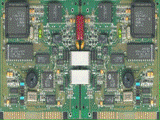Electrical & Computer Engineering, Department of
Date of this Version
2008
Abstract
Throughput vs. distance analysis and coverage requirements are critical issues in planning wireless network deployments. With the recent availability of IEEE 802.16e and its promise of larger coverage areas for high-speed data communication, evaluating it in a real-world environment is very important to us in our ongoing study of standards based wireless technologies for the Federal Railroad Administration (FRA). In this paper, we present results obtained with our IEEE 802.16e module for NS-2, particularly throughput vs. distance performance, and its consideration for designing a real-world multi-hop IEEE 802.16e testbed. Firstly, a quantitative analysis of throughput vs. distance performance is conducted via extensive simulation, and the optimal modulation and coding scheme as well as channel bandwidth profiles are identified for specific distances. Secondly, we present a real-world multi-hop IEEE 802.16e testbed design intended for installation along BNSF Railway track in Nebraska. We apply our findings towards selecting various base station deployment locations and their appropriate communications parameters in order achieve best possible multi-hop throughput performance. We also provide a client access coverage analysis for the various locations.


Comments
Published in VTC Spring 2008. IEEE Vehicular Technology Conference, 2008, pp. 2596-2600; doi: 10.1109/VETECS.2008.570
Copyright 2008 IEEE. Used by permission.